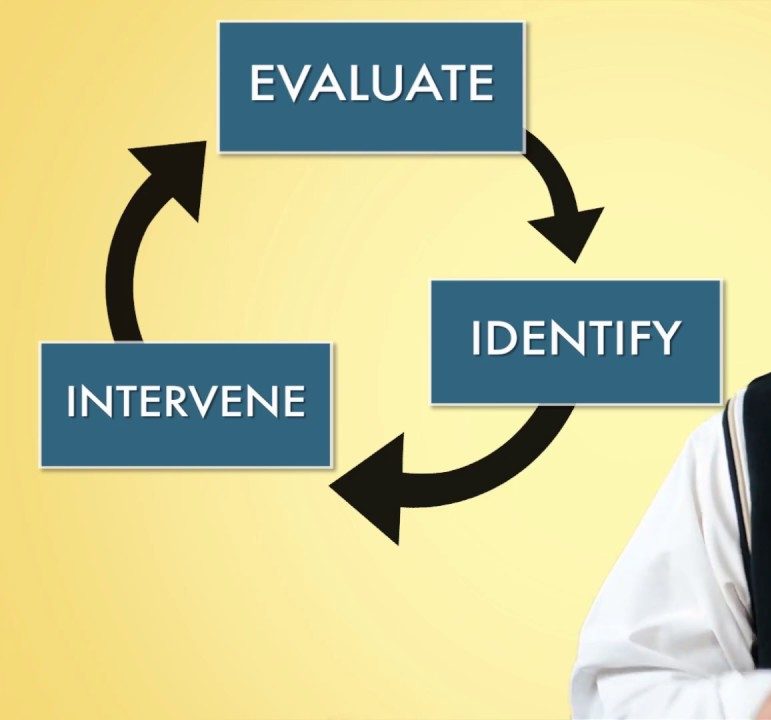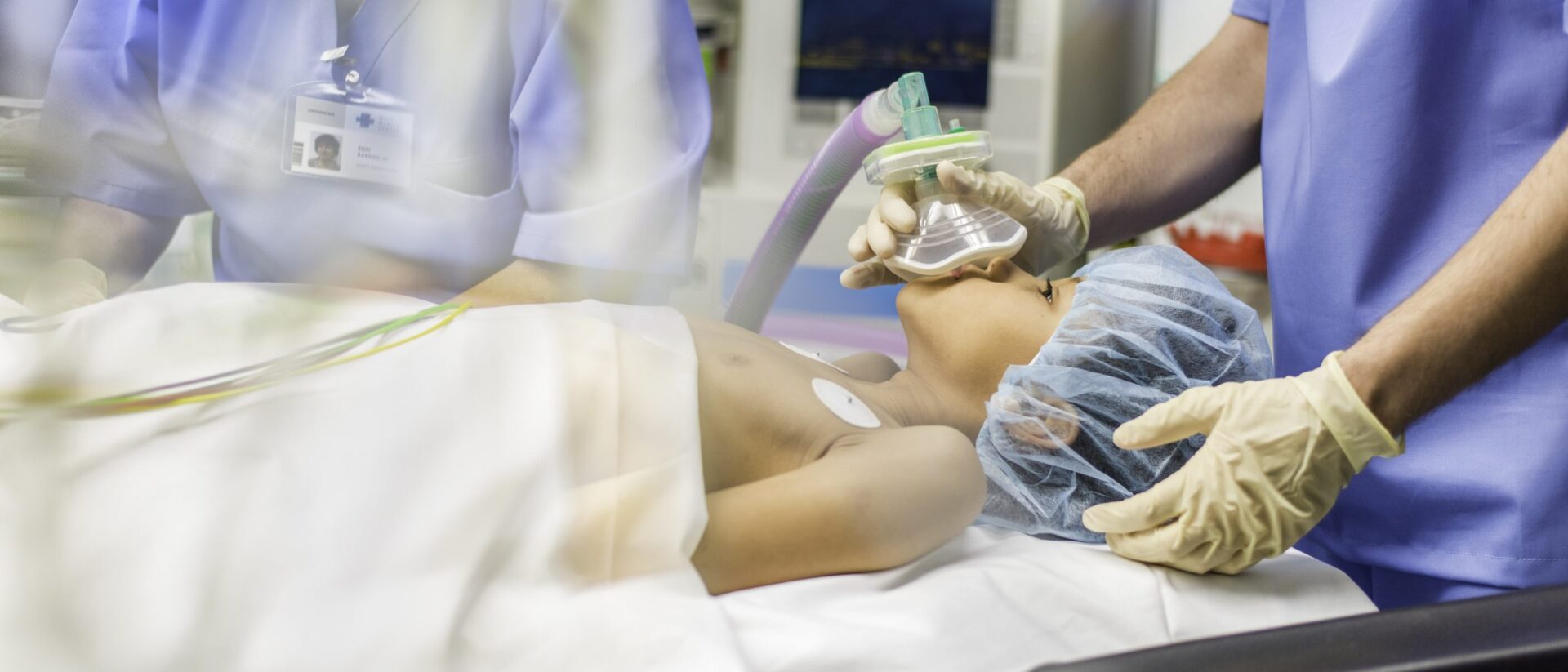Let’s talk about the primary assessment. This is really our first hands-on assessment of the patient. The primary assessment is broken into A, B, C, D, E: airway, breathing, circulation, disability, exposure. Those are the steps of our assessment in the primary assessment. However, know this: With all these steps, the primary assessment only has one goal, and that is to identify life threats. That’s all we’re looking for in the primary assessment—is there a life threat? We’re looking for a problem. We’re looking for a life threat. We’re evaluating for this life threat. If we find it, we’ll identify the life threat. Then we’re going to intervene and act on this life threat. If at any time during our primary assessment we come across a life threat, we stop what we’re doing and we deal with that particular threat before moving on. Throughout the entire course of patient care, we’re going to continue to use the evaluate, identify, and intervene approach to care. Let’s say we have a patient and during the transport we’re continuing our assessment, we’re continuing our evaluation, and we find something. We’re going to provide a treatment for that. Then we’re going to evaluate the effectiveness of our treatment and then make another decision and move on from there. We’re constantly using the same approach, not only in the primary assessment but throughout the entire course of patient care.
Recommended Articles

PALS Primary Assessment – Circulation
It’s time to talk about circulation, assessing a child’s cardiovascular status—how well are they moving oxygenated blood throughout the body?




